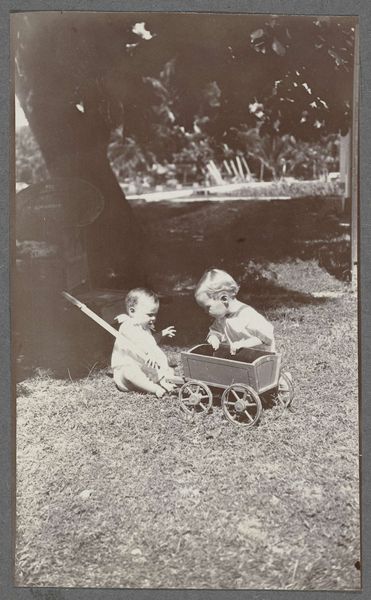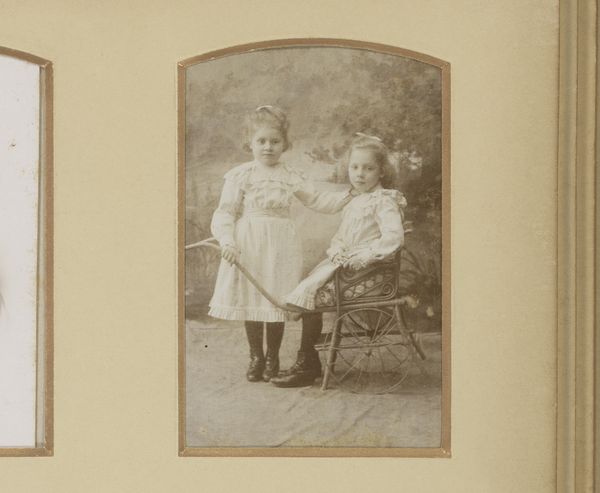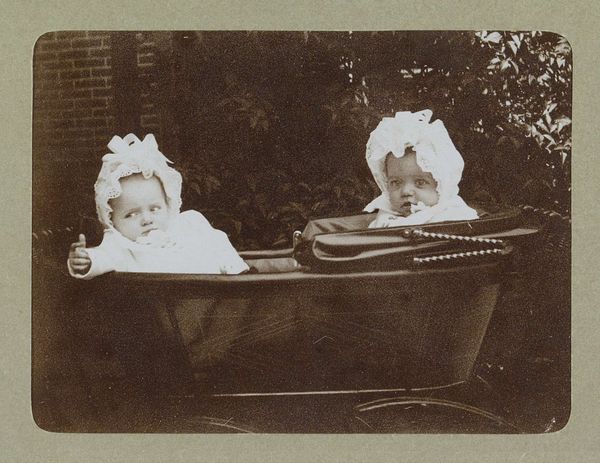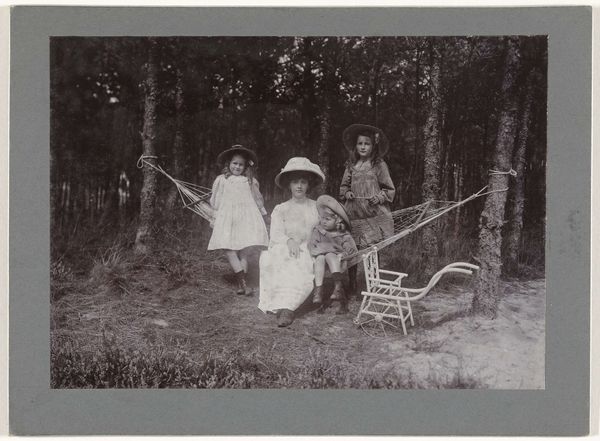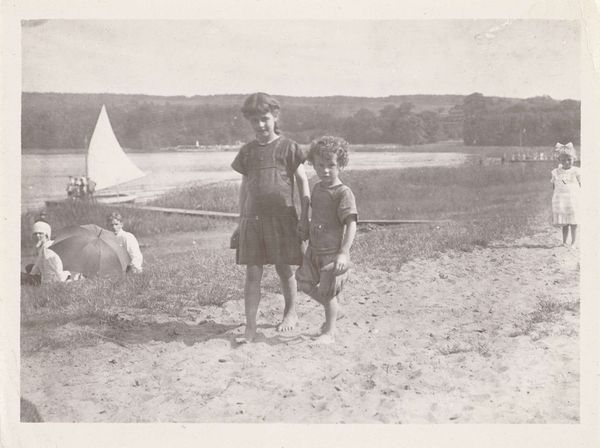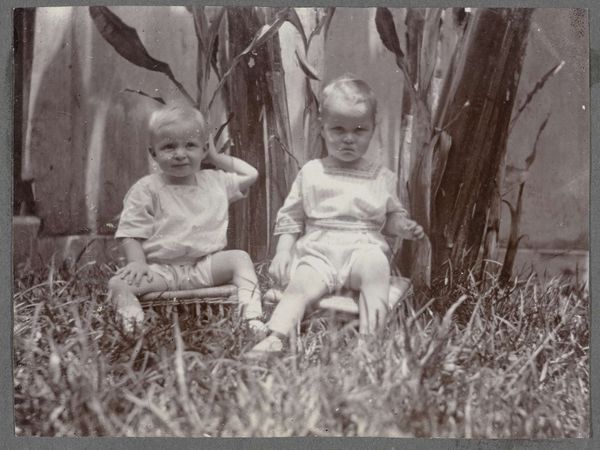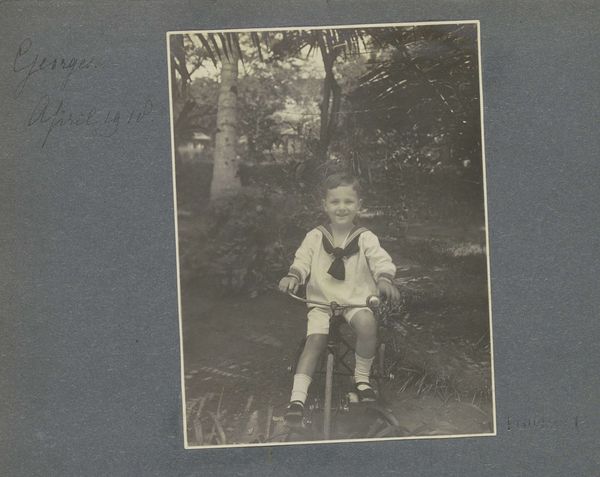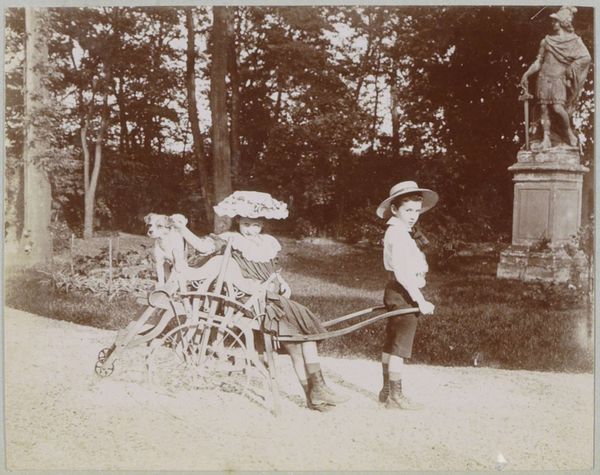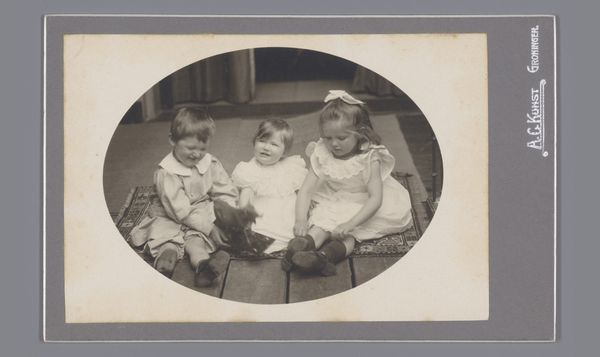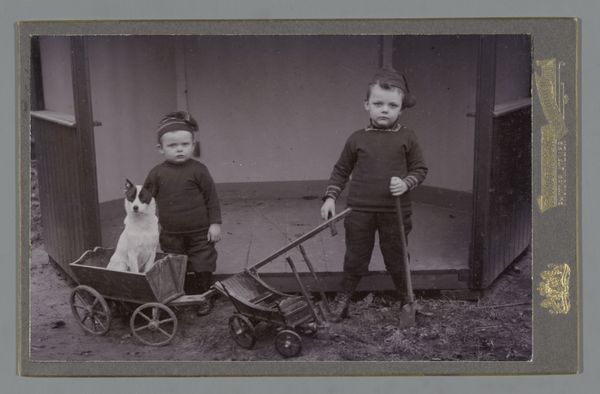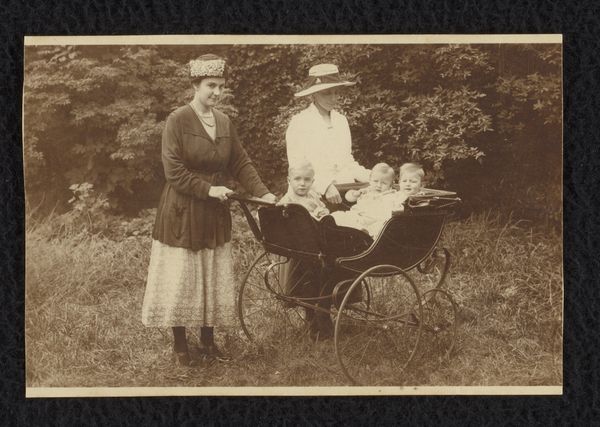
Kinderen Georges en Hans Bergsma met bokkenwagen in tuin op Sumatra Possibly 1917
0:00
0:00
photography, gelatin-silver-print
#
portrait
#
muted colour palette
#
photo restoration
#
landscape
#
archive photography
#
photography
#
child
#
gelatin-silver-print
#
captioned image
Dimensions: height 96 mm, width 136 mm
Copyright: Rijks Museum: Open Domain
Editor: Here we have an intriguing gelatin-silver print titled "Kinderen Georges en Hans Bergsma met bokkenwagen in tuin op Sumatra," possibly from 1917. There’s a formality to it that’s almost unsettling given the subject matter; it feels like a staged memory. What strikes you when you look at this piece? Curator: What jumps out to me is how this image performs as a colonial portrait. While seemingly innocuous, depicting two children with a goat cart, it participates in the visual language of colonial power. Consider the setting: Sumatra. Who commissioned this image, and what narrative were they trying to construct about their life there? Editor: So, it's not just a simple family snapshot? Curator: Not at all. The act of photographing itself was a tool of empire, used to document and classify the colonized world. Think about how this image might have been circulated – in family albums, perhaps even in publications back in the Netherlands. How would viewers have interpreted this scene of apparent domestic tranquility? Editor: Probably as evidence of a comfortable, civilized life in a "wild" place. The goat cart normalizes and almost domesticates the exotic. Curator: Exactly. And that domesticity is key to understanding the colonial project. It subtly reinforces the idea of European superiority and the right to impose their way of life on another land. Notice also the children’s clothing – how does that reinforce a European identity within this Sumatran landscape? Editor: I see what you mean! Their outfits create a stark contrast with the natural setting, emphasizing their foreign presence. The photograph then isn't just a memento but a statement. Curator: Precisely. It makes me wonder how such photographs contributed to shaping public perceptions of colonialism, and how they functioned to maintain colonial structures of power and privilege. Editor: It definitely adds a darker dimension to what seemed like a charming childhood scene at first glance. Now, the historical context provides much to consider. Curator: Indeed. Understanding the socio-political backdrop allows us to see beyond the surface and analyze the complexities embedded within even the seemingly simplest of images.
Comments
No comments
Be the first to comment and join the conversation on the ultimate creative platform.

